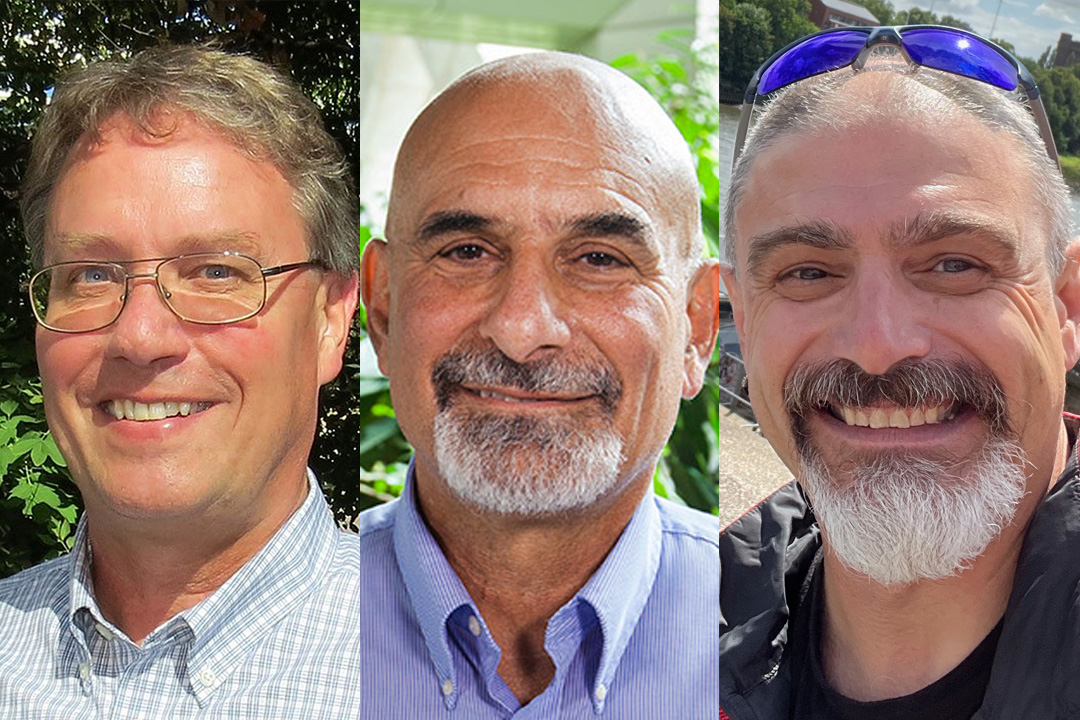
Bold USask projects aim to advance MS therapy, agriculture innovation
SASKATOON – Three interdisciplinary health and agriculture projects led by University of Saskatchewan (USask) researchers have been awarded $250,000 each under a federal program that aims to foster innovative high-risk research with the potential to yield significant and impactful results.
Recipients of the New Frontiers in Research Fund (NFRF) Exploration Grants are:
- Dr. Graham George (DPhil), professor in the Department of Geological Sciences in USask’s College of Arts and Science;
- Dr. Leon Kochian (PhD), professor in USask’s College of Agriculture and Bioresources, and Canada Excellence Research Chair in Global Food Security;
- Dr. Tim Sharbel (PhD), professor in USask’s College of Agriculture and Bioresources.
Studying role of metals in neurological disease development
George and his collaborators are investigating whether dysregulation (deficiency or excess) of essential metals is linked to the development of such diseases as multiple sclerosis (MS) caused by demyelination—damage to the protective myelin sheath that covers nerves.
The research is a bold new approach, which builds on a hypothesis that imbalance of metals such as iron, zinc and copper might be important in MS, said George.
“We propose to develop new methods for super-resolution visualization of metals using the synchrotron,” he said. “If metals are involved in MS and other demyelinating diseases, our study may lay the groundwork for developing potential therapeutics to prevent, delay or reduce severity of demyelination in certain subsets of MS patients.”
Improved therapies are urgently needed for MS, which is a leading cause of disability in young adults worldwide. Saskatchewan and Alberta are hotspots for the incurable disease in Canada, which itself has a disproportionately high incidence rate of MS compared to the rest of the world.
George’s collaborators are: Dr. Bogdan Popescu (MD, PhD), assistant professor in USask’s College of Medicine; Dr. Ingrid Pickering (PhD), professor in geological sciences; and Dr. Yanbo Zhang (MD, PhD), associate professor of psychiatry at the University of Alberta.
Getting at the root of climate-resilient plants
As climate change causes more prolonged and severe droughts and floods that threaten global food security, Kochian’s group is studying plant roots at the molecular and functional levels to develop climate-resilient crops that absorb water and nutrients more effectively and sequester more carbon in soil.
In developing climate-resilient crops, plant breeders so far have focused mostly on the genetic traits of plant shoots, which are readily visible. However, breeding plants for improved root traits has lagged because it’s tougher to study root systems in the soil.
Work by Kochian and others worldwide has led to the development of root growth and imaging platforms that enable scientists to determine the complex genetics that control efficient root system architectures in thousands of plants, which Kochian calls “the foundation for breeding better root systems.”
“In collaboration with university computer scientists, deep learning and artificial intelligence methods are being employed that help us, in a more automated fashion, to process and analyze the root images more quickly and use molecular breeding and gene editing to improve the plants’ use of water and nutrients,” he said.
Collaborating on the project are: Dr. Ian Stavness (PhD), associate professor of computer science in USask’s College of Arts and Science; Dr. Curtis Pozniak (PhD), professor in USask’s College of Agriculture and Bioresources and director of USask’s Crop Development Centre; and research associate Jordan Ubbens from computer science.
They have pioneered a method to use images of shoots to phenotype plants’ response to drought and flood stresses. Their goal is to employ deep learning technology to extend phenotyping to both the roots and shoots of plants in the lab and develop algorithms that would enable breeders to use images of shoot architecture to predict when plants in the field have larger root systems.
No seedy sex please, we’re breeding a better canola
Sharbel’s project holds the potential to spur a revolution in crop production, starting with Canola, by applying to plant breeding the findings of 20-plus years of lab research in Germany and Canada to understand naturally occurring asexual seed formation (apomixis) in plants.
“When applied to crops, our cutting-edge engineering biology approach would be a highly disruptive, billion-dollar technology that would greatly facilitate the production of new varieties with novel traits to feed our rapidly changing world,” said Sharbel.
His research group is working with the Institute of Synthetic Biology—at the CEPLAS-Cluster of Excellence on Plant Sciences at the University of Düsseldorf in Germany—and the National Research Council‘s (NRC) Saskatoon division to develop a “mini chromosome” that would deliver into Canola plants several apomixis-candidate genes they have identified.
“The impact on breeding programs would be enormous, as it would allow us to immediately fix any desired genotype in a single generation,” Sharbel said.
This would give Canada’s Canola industry an enormous advantage in both time and costs to create diverse varieties with desirable traits focused on specific environmental, agricultural or economic needs, something that until now has not been achievable using other modern breeding methods, he said.
Sharbel’s collaborators are: Dr. Martin Mau (PhD), research scientist at USask’s College of Agriculture and Bioresources, and Drs. Xingliang Ma (PhD) and Pankaj Bhowmik (PhD) at the NRC Saskatoon.
-30-
For media inquiries, contact:
Victoria Dinh
USask Media Relations
306-966-5487
victoria.dinh@usask.ca

